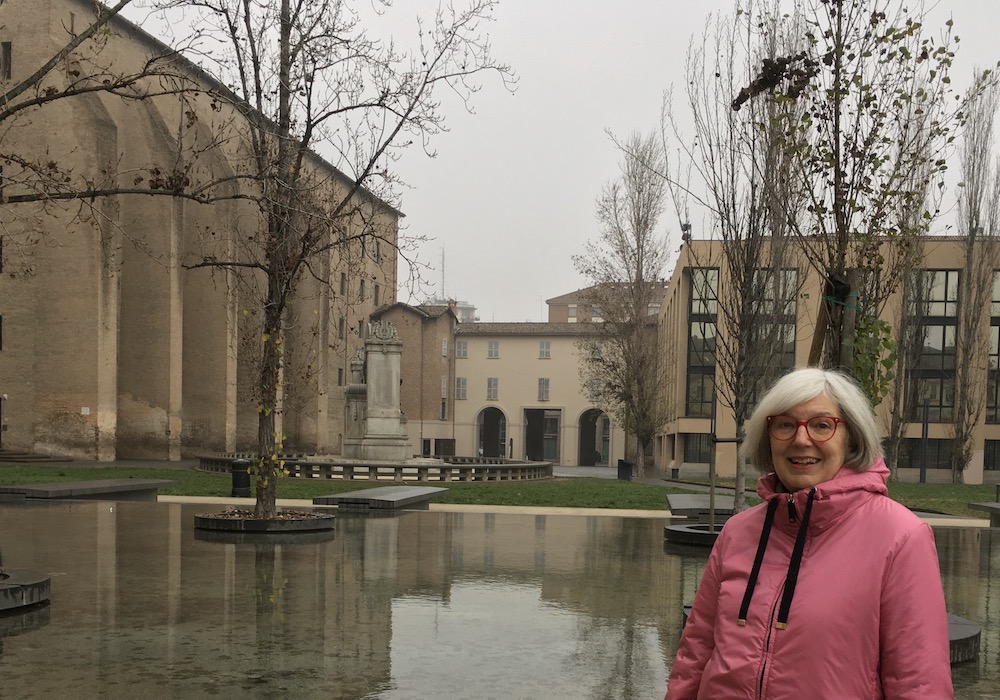If each city is like a game of chess, the day when I have learned the rules, I shall finally possess my empire, even if I shall never succeed in knowing all the cities it contains.
—Italo Calvino, Invisible Cities
Can you describe the mood of Salt Lake City as you feel/see it?
Right now: hopeful.
What is your most heartbreaking memory in this city?
After just moving here—post-divorce, post-move, new job, a mentor and friend recently dead. It’s a time I never want to think about.
What is the most extraordinary detail, one that goes unnoticed by most, of the city?
I can’t think of a singlemost extraordinary detail, but now that I bike to work and around town more and more, I am constantly struck by how the experience of moving within a city really involves all your senses. Biking down a city block, I can smell who’s doing laundry and what kind of soap they use, I can smell what people are having for dinner, I can hear people singing. The other day I stopped near an urban meadow because I heard a strange clacking and crashing I’d never heard before. It was a pair of young bucks fighting at the far edge of the field. The sound I heard was their antlers colliding. I had no idea one could make a sound that would echo for such a distance.
What writer(s) from here should we read?
There are so many writers who have lived here or who have written about here: Norman Mailer, Wallace Stegner, Terry Tempest Williams, Melanie Rae Thon, Kimberly Johnson, Katherine Coles, Jacqueline Osherow, Larry Levis (whom I never met but whose work was my reason for moving here to begin with, and for taking the job at the University of Utah where he once worked), Lance Olson, Craig Arnold, and Scott Spencer. The list goes on and on.
Is there a place here you return to often?
I live next to a canyon that leads into a 30-mile trail system called the Shoreline Trail. When my dogs were alive, I was up on the ridge overlooking the city at least three times a week.
Is there an iconic literary place we should know?
I think the mountains are our iconic literary place.
Are there hidden cities within this city that have intrigued or seduced you?
I run a project called Mapping Salt Lake City (www.mappingslc.org) that encourages people to create mini-essays or archives that reflect their personal history in Salt Lake. Each entry is and reveals a hidden city to me. Because to me, a city doesn’t only exist in one dimension: it’s a vector of constantly changing relationships, histories, and interactions. There’s no one place to visit: there’s certainly no one city.
Where does passion live here?
In people’s political discontent, as well as in their understanding of the natural world that influences our city’s growth and change.
What is the title of one of your works about Salt Lake City and what inspired it exactly?
I wrote an essay titled “The Lives of Strangers,” which is about the murder of a young woman that took place soon after I moved to the city.
Inspired by Levi, “Outside Salt Lake City does an outside exist?”
I think outside and inside are constantly changing states; being inside Salt Lake City sometimes I feel outside, while being outside Salt Lake City I feel inside. This isn’t about being passionate about a particular city but about how people imagine that city to exist. If Salt Lake City is unique (and I believe it is), it’s because its history means that a stronger local and national “imagination” of what Salt Lake City is and means has become attached to it.
Paisley Rekdal is the author of a book of essays, The Night My Mother Met Bruce Lee; a hybrid-genre photo-text memoir that combines poetry, fiction, nonfiction, and photography entitled Intimate; and four books of poetry: A Crash of Rhinos, Six Girls Without Pants, The Invention of the Kaleidoscope, and Animal Eye, which was a finalist for the 2013 Kingsley Tufts Poetry Award, the Balcones Prize, and winner of the UNT Rilke Prize. Her work has received the Amy Lowell Poetry Traveling Fellowship, a Village Voice Writers on the Verge Award, an NEA Fellowship, two Pushcart Prizes, the University of Georgia Press’s Contemporary Poetry Series Award, a Fulbright Fellowship, two inclusions in the Best American Poetry series, and various state arts council awards. Her poems and essays have appeared or are forthcoming in The New York Times Magazine, American Poetry Review, The Kenyon Review, Poetry, The New Republic, Virginia Quarterly Review, Tin House, and National Public Radio, among other publications.











